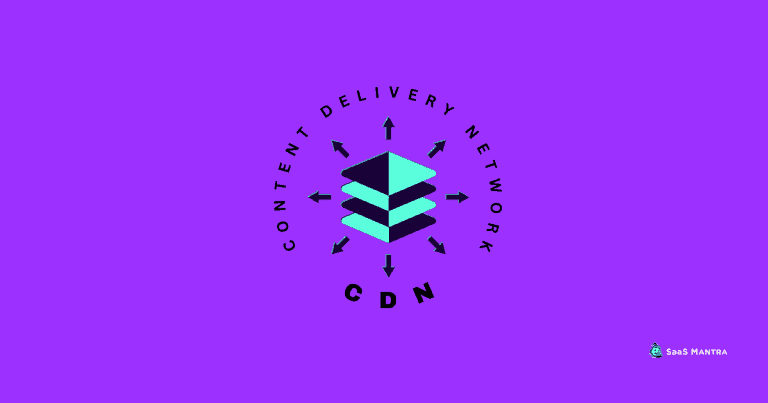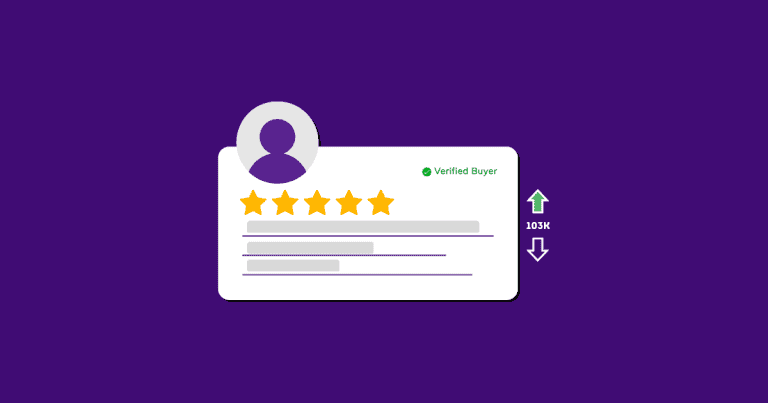How To Build a Successful SaaS Minimum Viable Product (MVP)?
Building an Minimum Viable Product (MVP) is crucial to the success of your startup. An MVP is a simple version of your final product that demonstrates its core value proposition.
Startups often struggle with the decision between adding these features later or developing them from scratch.
For example, a common pitfall is to start thinking about the design and user interface early on. Although this might seem like a good idea at first, it can lead to unnecessary delays and additional costs.
With a well-designed MVP, you will be able to see whether your idea resonates with potential customers. And because you have got a working version, you will also save time and resources.
What is a SaaS MVP?
The term “minimal viable product” refers to the smallest version of your product or service that would satisfy your customers and allow them to start using it.
When you build something from scratch, you’ll often get feedback from multiple sources (customers, co-workers, etc.)
But with an MVP, you don’t have to worry about those things because you’ve already developed and tested your idea.
That means you can launch faster and respond to customer feedback much easier.
A SaaS MVP is a basic version of your SaaS software that has enough features to allow your potential customers to use it. It is primarily used to test out your ideas and get feedback from users.
Why do you need SaaS MVP
The MVP is important as it allows you to test the viability of your product concept, validate customer interest, and get feedback on specific features.
Having an MVP helps focus your energy and resources towards what’s most important for quickly launching your SaaS because you don’t have to worry about building out more functionality than necessary.
1️⃣ It validates your product idea
Are you looking to validate your product idea? If yes, then you should consider Minimum Viable Product (MVP).
An MVP allows you to test out ideas without investing large amounts of time or money. This approach is especially useful for startups and entrepreneurs who don’t want to waste their resources on building something they won’t sell.
It is important to validate your product idea because you might get stuck at a certain stage where you can’t move forward.
Hence, minimum viable product (MVP) is a version of your product that meets your initial goals. It should not include any feature or function, but instead focus on providing value and proving your concept.
2️⃣ It’s faster and cheaper to build
Building the MVP is often touted as being less expensive than taking time to develop a fully functional application.
👉An MVP can be developed quickly and cost less than half the price of developing a final product. This means you can test out your ideas early without spending thousands of dollars.
3️⃣ It attracts investors
Venture capital firms invest heavily in startups because they look for companies that can offer disruptive innovation.
As a result, VCs are always looking for the next big thing that can change the way things are done.
Venture Capitalists (VC) have become an integral part of startup culture. They invest their time and resources into early stage companies hoping to reap great rewards down the road. VCs seek out opportunities where they can see real potential and create new markets.
When creating your MVP, you should focus on providing value to customers rather than building features that seem cool. If you want to attract venture capitalists, you must provide something useful to them.
As such, it makes sense to start off with offering low cost services for free, before transitioning to higher priced paid versions later on.
4️⃣ It generates a starting revenue
What does it take to launch a startup? The answer isn’t simple. Some startups succeed at the beginning due to luck or timing. Others fail because they don’t invest enough time into their idea.
Startups often struggle to get traction early in their lifecycle. There are three main reasons why some companies have a harder time scaling up from the very start.
👉First, they lack experience and expertise.
👉Second, they miss out on important opportunities to build relationships and connections.
👉Third, they overestimate the resources needed to scale.
Hence, to generate revenue, you need to develop a marketing strategy and test it before launching it publicly.
5️⃣ It gets you feedback from users
Feedback is crucial for businesses. Without feedback, businesses would never know whether their products are meeting expectations.
The best way to get feedback is through surveys. Surveys allow businesses to ask questions directly and then analyze the answers. They also give respondents the opportunity to provide additional information.
Feedback is key to success. In order to get quality feedback, businesses should consider multiple methods of gathering data.
These include focus groups, interviews, questionnaires, and surveys. While each method has its pros and cons, they all offer unique insights into customers’ opinions.
If you want to create a sustainable startup, you should focus on customer acquisition rather than distribution.
Key features in SaaS MVP
A successful SaaS MVP requires a good understanding of customer behavior and user experience. In addition, a clear vision of target customers and their pain points is necessary.
While building an MVP, you should focus on the key features and functionality required to get a good understanding of customer demand.
Now that you know the different SaaS MVP approaches, it’s time to learn about the key steps in developing a SaaS MVP. This will help you create a successful SaaS MVP and take your business to its next level.
1️⃣ Identify the target market
To succeed, startups often need to determine their target customers and build a strong customer validation strategy. They need to define their ideal customers, who they want to sell to, why they need to purchase their services, and how much value they provide.
By talking directly to potential customers, you will gain insight into their pains and desires, allowing you to develop a solution tailored specifically for them.
Identifying the right target audience means providing them with value through your solution. If the answer is yes, then they should be willing to pay for your product. Otherwise, you won’t succeed in creating a sustainable business model.
You should also be aware of the key features of a good user interface (UI). These include visual design, navigation, and copywriting.
The latter two elements are often overlooked, even though they can greatly influence customer experience.
2️⃣ Understand your target market paint points
There are three important things to get started with a new project:
1️⃣Identify who your customer is. Who are you targeting?
2️⃣Define your goal. Why are you building this product/service in the first place?
3️⃣ Decide on your audience.
The key idea behind an MVP is to test your initial concept before investing time and resources into developing a full-fledged product.
And since startups don’t usually have big marketing budgets, creating an effective MVP is a critical step towards success.
3️⃣ Build a product roadmap
Building a new product or service requires a clear understanding of where you want to go.
The best way to get clarity on your vision is by creating a roadmap—a document outlining the steps needed to reach your goals.
Creating a product roadmap is critical to building a successful company. Without a roadmap, you risk wasting time and resources on projects without having a defined path forward. It also helps stakeholders visualize their future with a single idea in mind.
A great roadmap should include milestones you want to achieve along the way. This gives you a sense of urgency, and makes sure you don’t fall behind schedule.
Once you have your roadmap ready, you need to share it with the team. That way everyone knows what they need to deliver at each stage of the project.
👉Building a product roadmap starts with defining our target audience, and understanding their pain points.
Then, we design features that solve those problems. Finally, we develop our MVP using agile development practices.
4️⃣ Choose a SaaS pricing model

As a startup founder or early stage investor, you want to get a sense of the value proposition behind a new concept before investing time and energy into developing it further.
If you want to attract customers, you will need to offer low prices at first, then gradually increase them over time.
This is called ‘freemium’ marketing strategy.
👉Freemium pricing model
Freemium means using free services or software with some limitations. For example, a freemium strategy allows businesses to give their customers access to certain features without paying them anything upfront.
The key advantage of freemium pricing lies in its ability to provide both value and convenience at the same time.
Freemium models allow businesses to offer a free version of their service, but also add additional benefits to those who pay for premium upgrades.
This approach helps companies attract new clients, retain existing ones, generate revenue, and increase brand recognition.
👉Tiered pricing model
Tiered pricing is a common strategy for businesses who want to attract customers without charging too much.
In other words, they offer their services at a low price point in order to get new clients. Once they gain experience and build a reputation, they increase prices to reflect higher quality or better value.
Tiered pricing helps businesses gain insights into customer behavior and improve overall performance.
They also allow consumers to try out new services without being charged until they decide whether or not to purchase.
There are three main reasons why you should consider implementing tiered pricing into your marketing strategy.
🔹First, it increases customer loyalty.
🔹Second, it helps increase revenue.
🔹Third, it improves user experience.
5️⃣ Promote your SaaS MVP before you launch
Your SaaS startup has launched and now you want to get traction. How do you promote your MVP without spending too much money?
The good thing about SaaS startups is they don’t require any upfront investment like hardware, software, or other types of businesses do. They only require a payment after they deliver their service. This means that you can focus on building your product instead of marketing.
There are three main ways to gain customers and increase revenue from existing customers:
1. Upselling/cross-sell (upsell)
2. Retargeting
3. Customer acquisition
👉Create buzz on social media:
Social media has become an essential part of our daily lives. Whether we like it or not, social media platforms like Facebook, Twitter, Instagram, Snapchat, etc., have become integral parts of our everyday life.
The question is, how can we leverage these powerful tools to build awareness and traffic for our businesses?
A great way to build awareness and increase visibility is by creating social media posts that include links to your company website and/or blog.
This type of post allows potential customers to explore your product further, and helps them discover why they should choose your service over competitors.
👉Offer SaaS Lifetime deal (LTD):
One of the best things you can do for your SaaS MVP to get people interested is to offer them a lifetime deal (LTD).
This is when you offer customers a SaaS product for a one-time price instead of a monthly subscription.
This kind of offer is popular because it allows early adopters to test out your SaaS product before they buy it. And, it’s a good way to generate additional revenues for your SaaS business.
Create a minimum viable product or website, launch it, and get feedback.
–Neil Patel
Final Thoughts on SaaS MVP
An MVP for a SaaS product is a good way to validate your SaaS product idea and get early adopters to use your SaaS product.
To create an effective SaaS MVP, first identify the pains points you want to solve and then determine which core features would be most useful for solving them.
You also want to focus on generating interest for your SaaS MVP, gather customer feedback, and get user reviews.
After launching your SaaS MVP (minimum viable product), you can start getting feedback from your early adopters and implement changes that address a real need in your target market.
FAQs
1. Why create an MVP?

An MVP helps you get feedback from early adopters. This allows you to refine your concept before investing time and effort into building a fully functional solution.
If you don’t start out with a solid idea, then you will waste valuable resources without knowing whether your idea has any merit.
2. What are some common mistakes when creating an MVP?

-Not getting customer feedback early though
-Overbuilding
-Not being prepared to pivot
-Not being scrappy enough
3. How do you create an MVP?

-Define your target audience & customer base
-Build an MVP of a product
-Identify the problem that your product will solve
-Test your product with potential customers





